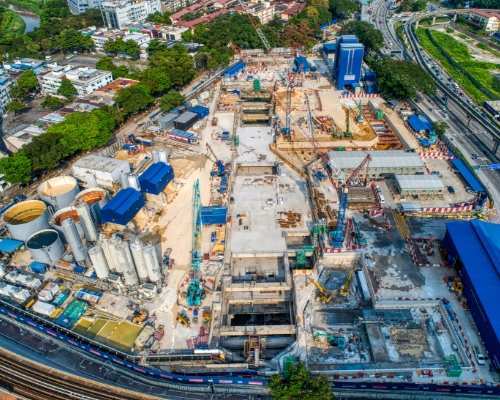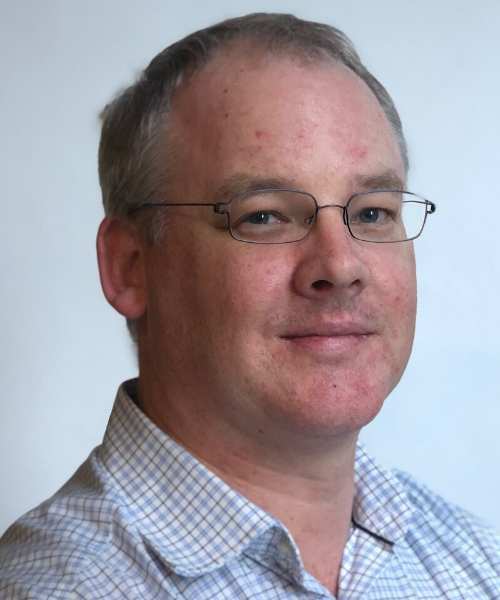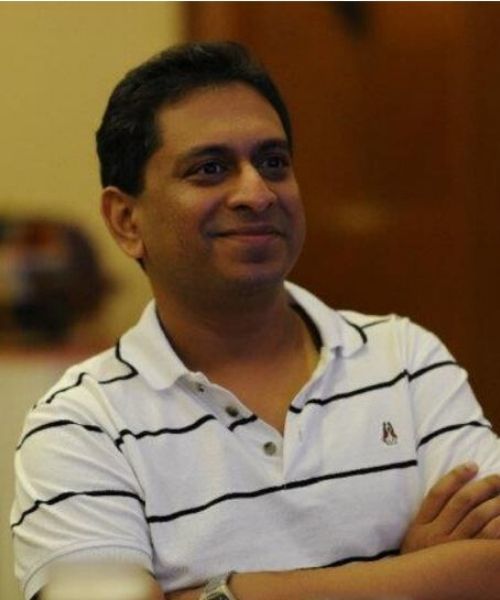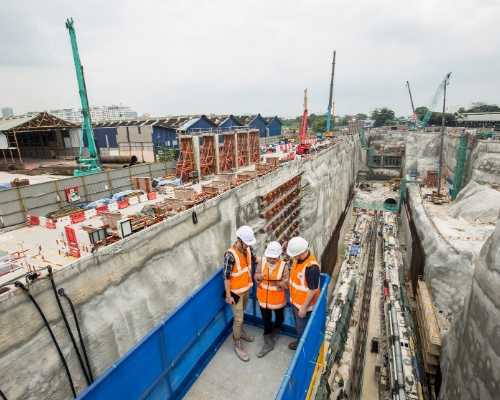3 Minute Read
October 23, 2019
0%
Recently, I had the honor of speaking with Ronan Collins and Tony Joseph with Gamuda Berhad, Malaysia’s largest civil engineering contractor. What began as an interview for a Viewpoint case study on Gamuda’s extensive use of our Field View solution grew into a larger story as it became quickly evident that Gamuda was a contractor dedicated to innovation and cutting-edge technology.

In 1976, Gamuda Berhad started out as a small construction outfit, which steadily branched out into its three core businesses: engineering and construction, property development and infrastructure concessions. As the company grew, its focus moved to larger transportation and infrastructure projects like highways and railways throughout Malaysia. Today, Gamuda’s expertise in project management, tunneling, geotechnics, engineering and construction is virtually unparalleled. Just some of Gamuda’s recent project highlights include:
Collins, the company’s head of project information management and Joseph, development lead responsible for technology implementations and oversight spoke of how digitizing their operations with modern, cloud-based software solutions was vital to success. Here are some snippets of that interview:

Viewpoint: It seems like there is a strong push for technology and innovation within Gamuda’s operations. How does Gamuda drive its technology initiatives?
Collins: Our CEO, Lin Yun Ling, is a huge believer in innovation and driving things forward. That comes from the innovation in our engineering and design teams, and that leads into technology. So, there’s always been an investment in developing technology and innovation. On the major projects — and the MRT project is a good example of this — there has been a lot of focus on innovation. There’s a culture in the business of problem solving, innovating and looking for new ideas. And when viable ideas come up, there is a lot of support from senior management. When we started looking at Field View, for instance, we had a lot of support to invest in Field View and grow it.

Viewpoint: So technology is definitely part of the larger, overall vision…
Joseph: In Malaysia and in this region, it gives us an edge to win projects. Especially when you’re working with governments here in this region on large projects – they need a lot of technology in order to implement. I believe we are at the forefront of this. When I joined, it was mainly for the MRT project, but we are looking at a number of other large-scale construction projects. These are projects where you have so many different departments that need to communicate, as well as massive construction sites where we need to manage the permits, inspections, changes, and other documentation — traditionally that was done with paper. Using Field View, we’ve managed to reduce a lot of overhead and the time taken to get approvals and manage these inspections. There is collaboration with the site operations and there is collaboration with the consultants and the resident engineers to check on the quality and the work done.
Ronan: Just one thing to add to that in terms of what Tony is doing. Tony is in transition at the moment from a very project-centric role, where he was on the MRT project, to joining myself and a few others in the head office to be a bit more instrumental across the bigger business. The plan now is to leverage Tony and his team’s experience in using Field View on the MRT and expand that across upcoming major projects. We’re about to start another railway project in another state, which is called Penang, which is a separate city north of KL (Kuala Lumpur) and we intend to roll out all of the systems that we’ve developed on the current project on this new project. Tony is going to be a key member of that team in terms of managing that roll out and managing all of those systems.

Viewpoint: Prior to implementing Field View, I assume these manual processes and use of paper forms in the field were problematic to efficient operations.
Joseph: When I first joined, there wasn’t a document management system for a company this size. It was kind of shocking.
Collins: We had no idea how many documents had been lost in the past. We had no idea how many errors had occurred in the past. But we knew it is typical in construction to experience shortcuts, skipped inspections, and work completed without approvals
Joseph: Everything has to be tracked. There are digital audit trails, electronic signatures and more that are critical for a company of our size. Getting this across to the end users, initially, was difficult as people were comfortable with paper and pen. But once supervisors understood the need and saw how easy (the technology) was, they supported it, and it was easy to implement.

Viewpoint: How did you get the technology buy-in from users and supervisors you needed?
Joseph: With Field View, what we did was we worked with each department. We had a week-long workshop and we called the civil engineers from each department, whether it was safety or quality or MEP, and we sat down with individual leaders and all of the key (Field View) users – we call them super users. We tried to work out what their issues were on site and how they can reduce the reliance on paper forms. By going digital, we were trying to reduce many of the questions and optimize a lot of these forms to be easy to use and efficient. We tried to minimize the number of questions (fields) needed and make it easier to use. From there, we worked with live users and fine-tuned these forms. We met together three or four times before it was rolled out. It took us about six months to develop and streamline all of these forms. Now we have more than 480 templates across all departments. We have created more than 200,000 live digital forms over the course of a year and a half or so. These are 200,000 live forms with project data – not tests. We have 900 digital users…200 tablets and the rest are using smartphones. The key to this was getting the actual stakeholders involved.

Viewpoint: How much easier has it made things being able to work with data in the cloud?
Joseph: When we work with the cloud, it’s not just Field View and Viewpoint we’re using. We have other systems as well where we’re using cloud servers. It reduces so much the overhead of having systems administrators and network administrators. You remove the whole IT personnel from the main level and you let the cloud providers manage the servers. Security, backups, updates — all of that is handled by the cloud providers. From our perspective, it allows us to move forward with the tools and functionality.
Collins: From a business perspective, one of the biggest challenges we have in senior management is we often don’t know exactly what’s happening on the job site. When we go looking for progress reports or status reports on individual projects, we’re getting information that might be two, three, four weeks out of date. By going to a digital, cloud-based system, we can actually use daily diaries, daily progress reports and real-time information through Field View to create dashboards that will allow us to see real-time progress. Using business analytic tools like IBM’s Cognos and using APIs, we’re basically building dashboards for the project managers and project directors to be able to review what’s happening in essentially real time. It’s improving our use of Field View for collecting data, and then improving our engineers’ data literacy for reporting and project management. It’s going to be a transformative part of the business. The cloud and the speed it provides is going to have a major impact in the way we monitor projects in real time.
3 Minute Read
October 23, 2019
3 Minute Read
October 2, 2019
4 Minute Read
September 4, 2019